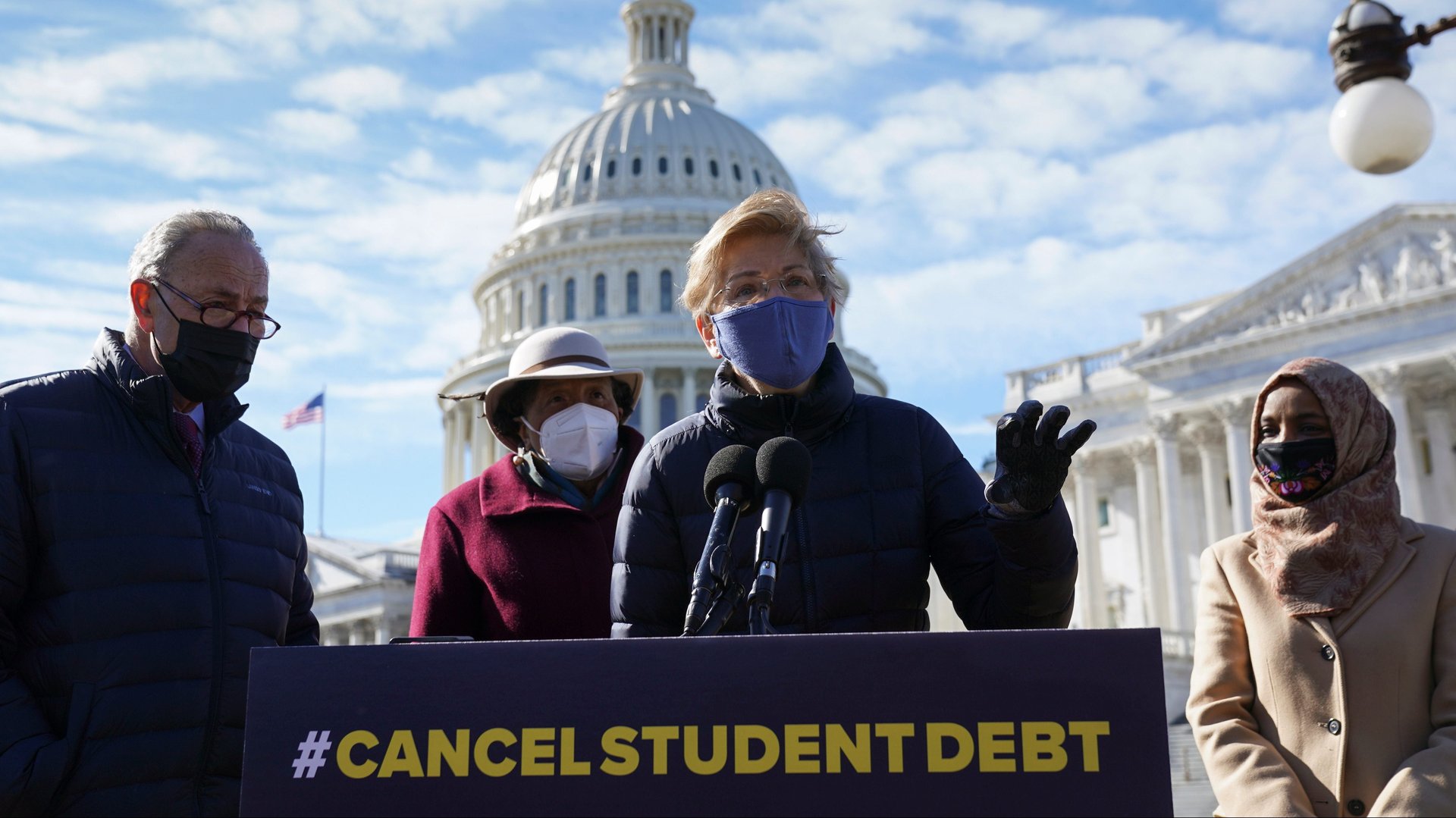What you need to know about Biden’s plan to restart student loan payments
Update: The Biden administration on Dec. 22 announced that it will extend the student loan payment freeze through May 1, 2022.


Update: The Biden administration on Dec. 22 announced that it will extend the student loan payment freeze through May 1, 2022.
For nearly two years, millions of Americans with federal student loans have not had to worry about paying them back. That was set to change next year on Feb. 1, when US president Joe Biden was expected to lift the current pause on student loan payments.
“We’re still assessing the impact of the omicron variant. But a smooth transition back into repayment is a high priority for the administration,” White House press secretary Jen Psaki said on Dec. 10. She added that the administration has been in contact with borrowers and also extended contracts with loan servicers, which collect payments and provide customer service support to borrowers.
But the Biden administration reversed course on Dec. 22, saying it would extend the freeze through May 1. “We know that millions of student loan borrowers are still coping with the impacts of the pandemic and need some more time before resuming payments,” the president said in a statement.
Around 43 million Americans currently have student loans, with debt totaling $1.75 trillion. The average monthly loan repayment is around $393. While the Biden administration announced plans to make more public sector workers eligible for loan forgiveness in October, so far calls from some Democrats to completely cancel student debt have been unsuccessful.
When repayments do start again next year, here’s what US federal loan recipients should know.
How to prepare to restart student loan payments
Cecilia Clark, a student loan expert with personal finance company NerdWallet, offered a few tips for preparing to restart payments.
- Take a look at your budget. “With a little more than a month before repayment starts, the time to solidify your repayment plan is now,” Clark says. See how payments will fit into your current budget, and set money aside in January so you’ll have enough for both your student loans and your lifestyle.
- Consider an income-driven repayment plan. Under these plans, you can pay as little as $0 if you’re not currently earning money. The Biden administration is said to be considering ways to make it easier to enroll in income-driven plans.
- Contact your loan servicer… You should get in touch as soon as you realize you’ll have problems making payments, Clark says. This point of contact can help you explore options such as income-driven repayment, deferment, or forbearance.
- …and be proactive if your loans are transitioning to a different servicer. A number of major loan servicers quit working with the US federal government during the payment pause, meaning around 16 million borrowers will now have their loans handled by a different company. If your loans are transitioning to a new servicer, be sure to sign up for their updates and keep copies of your payment records on hand. “It’s also likely that your payment settings, like autopay, won’t move over to your new servicer, so be prepared to update those once the switch happens,” Clark says.
- Check to see if you qualify for forgiveness. The Biden administration has expanded eligibility for loan forgiveness to thousands of additional public sector workers, so if you’re a member of the military, a first responder, or a teacher, for example, you may qualify to have your loans canceled after 10 years. Borrowers on total and permanent disability should also see their federal student debt automatically forgiven following a Department of Education policy change announced in August.
Is there more student loan relief on the horizon?
Democrats Chuck Schumer, Elizabeth Warren, and Ayanna Pressley have been urging the Biden administration to extend relief for Americans with student loans. In a Dec. 8 letter (pdf) to the president, they warned that lifting the freeze on payments would threaten US economic recovery, and reiterated a call to extend the pause, as well as cancel up to $50,000 of student debt for all borrowers.
Biden pledged to cancel $10,000 in federal student loan debt when he ran for office, but thus far no such proposal has materialized. “If Congress sends him a bill, he’s happy to sign it,” Psaki said on Dec. 14.
For now, broad debt relief proposals face a long road to the president’s desk. “Both within the Biden administration and in Congress, at this point I don’t know there’s a sense that broad or blanket student loan forgiveness is on the horizon right now,” says Kevin Miller, associate director of higher education at the Bipartisan Policy Center. He believes there’s a consensus among both parties that the student loan system isn’t working as intended, but ultimately, “there are limits to how much can be done by the Biden administration and the Department of Education.”